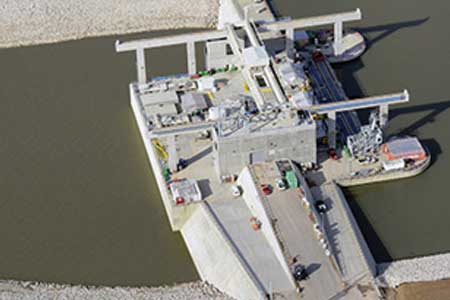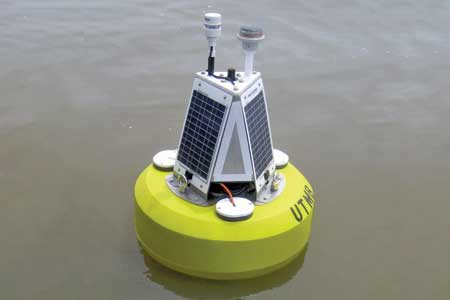WQData LIVE Web Datacenter
Features
Example Project Data
Select from these WQData LIVE projects using the Public Portal feature to see how easy it is to access and share environmental data.
Fondriest Center for Environmental Studies
Education and Research Center
Regional Science Consortium
Tom Ridge Environmental Center at Presque Isle
Documents
Plans
Get Started
Ready to learn more? Contact a NexSens Applications Engineer today to discuss your application and see how WQData LIVE can optimize the data workflow.
Case Studies
Cannelton Dam Hydroelectric Project
At six different sites along the Ohio River, American Municipal Power, Inc. (AMP) is retrofitting existing locks and dams operated by the U.S. Army Corps of Engineers to generate environmentally friendly hydropower. Many of these projects have broken ground over recent years, but the first to get underway was at Cannelton Locks and Dam, located along the Ohio River near Cannelton, Indiana.Work to retrofit the dam commenced in 2010, and the hydropower plant came online in June 2016. The plant is located on the Kentucky side of the river, near Hawesville. It diverts water away from the existing dam and into bulb turbines that can generate around 458 million kilowatt-hours of energy annually.A focus throughout the project has been to minimize the environmental impact during construction and now during operation. A key component of this objective has been long-term monitoring of the Ohio River’s temperature and dissolved oxygen levels, two parameters critically important for the aquatic ecosystem.
Maumee Bay Algae Monitoring
In order to protect the millions of people who rely on Lake Erie for drinking water from the threat of harmful algal blooms in its water, nearby universities and state agencies have coordinated monitoring efforts to better predict the presence of algal toxins. Their work has helped expand a network of data buoys in the great lake that keep an eye on water quality with an aim to avoid another drinking water crisis like the one that affected residents of the City of Toledo in August 2014.One such collaborative project has yielded a new data buoy in Lake Erie’s Maumee Bay, near the area that spawned the August 2014 toxic algal bloom. But instead of deploying the buoy close to the city’s water intake, it has been placed 8 miles away to provide early warnings of blooms, and give water managers more time to adjust operations or warn city residents.The Maumee Bay algae monitoring platform’s purchase was funded by the Ohio Board of Regents, while its operation is overseen by scientists at the University of Toledo.
Buffalo River Dredge Turbidity Monitoring
New York’s Buffalo River has a legacy of industrial contamination, like a lot of other Great Lakes rivers and harbors. But its past of sustaining large influxes of industrial effluent has netted it the distinction of being named a Great Lakes Area of Concern.With its dirty legacy flowing right through their backyard, environmental groups near the river, including the Buffalo Niagara RiverKeeper, began work to bring it back to a viable state. The RiverKeeper helped to start the Buffalo River Restoration Partnership, which includes Honeywell and governmental agencies like the New York State Department of Environmental Conservation, U.S. Army Corps of Engineers, U.S. Environmental Protection Agency and the New York State Department of Environmental Conservation.Much of the work to bring the Buffalo River back centers on a lengthy four-year dredging project that is scheduled to be completed in 2015. Members of the Partnership came together to encourage the work that is overseen by the U.S. EPA.































